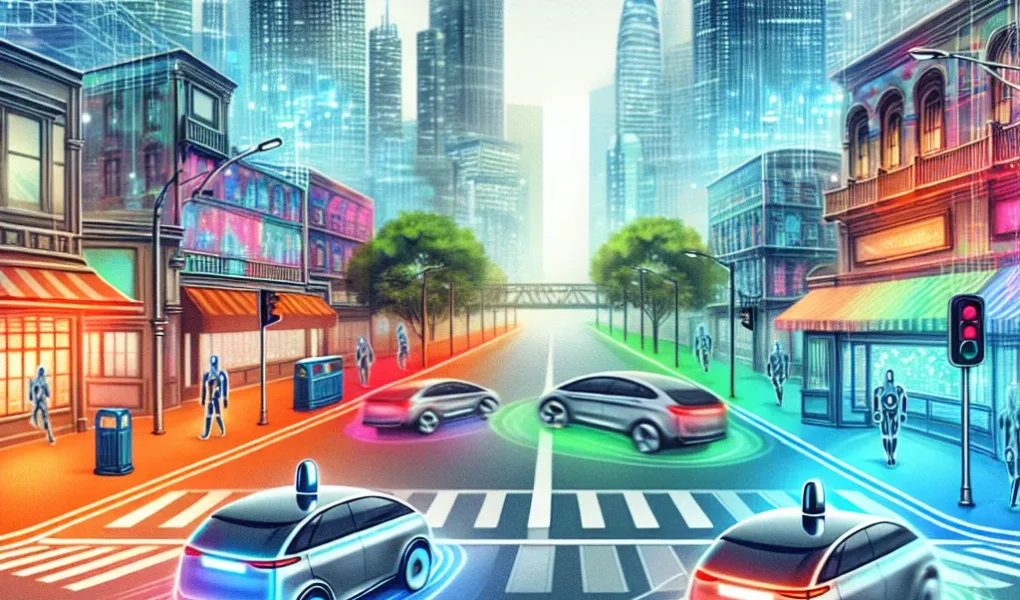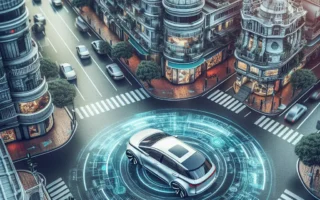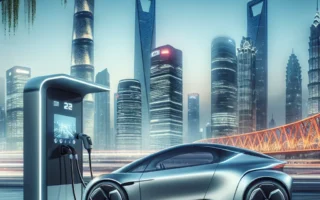Revolutionizing Urban Transportation: The Rise of Autonomous Vehicles
Autonomous vehicles, once a futuristic concept, are now becoming an integral part of urban mobility, revolutionizing the way people and goods move within cities. The rise of autonomous vehicles promises to address key challenges such as traffic congestion, air pollution, and parking shortages, ultimately transforming urban transportation as we know it.
One of the most significant impacts of autonomous vehicles on urban mobility is the potential to significantly reduce traffic congestion. With their advanced technology and ability to communicate with each other, autonomous vehicles can optimize traffic flow, minimize bottlenecks, and reduce the overall number of vehicles on the road. This has the potential to create smoother and more efficient transportation networks in urban areas, leading to shorter commutes and less time wasted in traffic.
Furthermore, the integration of autonomous vehicles into urban mobility has the potential to improve air quality. By utilizing electric powertrains and optimizing driving patterns, autonomous vehicles can help reduce harmful emissions in densely populated urban areas. This can have a positive impact on public health and contribute to creating a more sustainable and livable urban environment.
In addition to addressing traffic congestion and air pollution, autonomous vehicles have the potential to alleviate parking challenges in urban areas. With the ability to drop off passengers and then find parking outside of highly congested city centers, autonomous vehicles can help free up valuable urban space currently used for parking. This space can then be repurposed for green areas, pedestrian zones, or other urban development projects, ultimately contributing to more vibrant and attractive cities.
Overall, the rise of autonomous vehicles is set to revolutionize urban transportation by creating more efficient, sustainable, and people-centered mobility solutions. As these vehicles continue to develop and become more widespread, cities and urban planners will need to adapt to fully harness their potential and ensure that the urban environment is ready for this transformative shift in transportation.
Overcoming Traffic Challenges: How Autonomous Vehicles are Reshaping Urban Mobility
The introduction of autonomous vehicles has the potential to revolutionize urban mobility by addressing the longstanding challenges of traffic congestion, parking shortages, and inefficient transportation systems. As autonomous vehicles become more prevalent on city streets, they offer a promising solution to overcome these traffic challenges and reshape urban mobility.
One of the key ways in which autonomous vehicles are transforming urban mobility is through their ability to optimize traffic flow. With advanced sensor technology and real-time data analysis, autonomous vehicles can navigate urban environments more efficiently, reducing congestion and minimizing the time wasted in traffic jams. This not only improves the overall flow of traffic but also has the potential to reduce the environmental impact of idling vehicles.
Furthermore, autonomous vehicles are poised to revolutionize urban parking by minimizing the need for large amounts of dedicated parking infrastructure. Self-driving cars can drop passengers off at their destinations and then proceed to autonomously find parking spaces, maximizing the utilization of existing parking facilities. This has the potential to free up valuable urban real estate currently allocated for parking lots and garages, allowing for more efficient land use in densely populated areas.
In addition to enhancing traffic flow and parking efficiency, autonomous vehicles are also driving the development of new mobility services, such as on-demand autonomous taxis and shared autonomous vehicle fleets. These services have the potential to reduce the number of privately owned vehicles on the road, leading to fewer vehicles competing for limited urban road space.
Overall, through their impact on traffic flow optimization, parking efficiency, and the evolution of new mobility services, autonomous vehicles are reshaping urban mobility by offering innovative solutions to long-standing traffic challenges. As autonomous vehicle technology continues to advance, its potential to transform urban transportation and improve the quality of life in cities around the world becomes increasingly evident.
The Future of City Travel: Exploring the Impacts of Autonomous Vehicles
The future of city travel is set to be revolutionized by the introduction of autonomous vehicles, bringing about significant changes in urban mobility. These self-driving cars have the potential to impact various aspects of city life, from traffic flow and infrastructure to public transportation systems and the overall urban landscape.
As autonomous vehicles become more prevalent, they are expected to offer a safer, more efficient, and convenient mode of transportation. With advanced sensors and AI technology, these vehicles can communicate with each other and the surrounding infrastructure, potentially reducing traffic congestion and the need for extensive parking spaces. This could lead to a transformation in how cities are designed, with a reduced emphasis on parking lots and more focus on green spaces and pedestrian-friendly areas.
Furthermore, the rise of autonomous vehicles may also have implications for public transportation services. As ride-sharing and on-demand autonomous taxis become more common, there may be a shift in the way people perceive and utilize public transit. Cities may need to adapt their existing transportation systems to complement the use of autonomous vehicles, ensuring a seamless integration of different modes of travel.
While these advancements promise a host of benefits, they also pose challenges that need to be carefully addressed. Concerns about cybersecurity, regulations, and the impact on employment in traditional transportation sectors are among the key considerations that need to be taken into account.
In conclusion, the advent of autonomous vehicles is poised to reshape urban mobility in profound ways, offering new opportunities for cities to enhance transportation efficiency and sustainability. However, it will be essential to proactively manage the transition to ensure that the full potential of autonomous vehicles can be realized while addressing potential drawbacks.
Navigating Urban Spaces: Understanding the Role of Autonomous Vehicles in City Mobility
The introduction of autonomous vehicles (AVs) is poised to revolutionize urban mobility, offering the potential to alleviate traffic congestion, reduce accidents, and enhance transportation efficiency. One critical aspect of this transformation is the ability of AVs to navigate urban spaces. Understanding the role of autonomous vehicles in city mobility is essential for comprehending the impact they will have on urban landscapes.
Autonomous vehicles utilize advanced technologies such as LiDAR, radar, and high-definition mapping to perceive and interpret their surroundings. This enables them to navigate complex urban environments, including dense traffic, intricate road networks, and unpredictable pedestrian behavior. By leveraging real-time data and sophisticated algorithms, AVs can make split-second decisions to safely maneuver through urban spaces.
Moreover, the integration of autonomous vehicles into urban mobility systems holds the promise of optimizing traffic flow, minimizing travel times, and reducing the need for extensive parking infrastructure. As AVs can communicate with each other and infrastructure, they have the potential to coordinate movements, merge seamlessly into traffic, and enhance overall transportation efficiency.
However, the widespread adoption of autonomous vehicles also raises significant questions about their impact on urban landscapes. Issues such as urban sprawl, curbside management, and the reconfiguration of public spaces will need to be addressed to ensure that the introduction of AVs complements the existing fabric of urban environments.
In conclusion, understanding how autonomous vehicles navigate urban spaces is pivotal in grasping the broader implications of their integration into city mobility. As AV technology continues to advance and regulations evolve, it is crucial to monitor and assess the impact of autonomous vehicles on urban landscapes, ensuring that their deployment contributes to creating sustainable, accessible, and livable cities.
The Impact of Autonomous Vehicles on Urban Mobility skupiający się na aspekcie Navigating Urban Spaces: Understanding the Role of Autonomous Vehicles in City Mobility. Artykuł powinien być zoptymalizowany pod słowa kluczowe dotyczące tego tematu.
Urban Evolution: The Transformative Potential of Autonomous Vehicles
With the rapid advancement of autonomous vehicle (AV) technology, urban mobility is on the brink of a transformative evolution. The introduction of AVs into urban environments holds the potential to revolutionize the way we think about transportation and city planning. As these vehicles become increasingly integrated into our daily lives, they are expected to have a profound impact on urban landscapes, traffic patterns, and overall quality of life for city dwellers.
One of the key aspects of the urban evolution brought about by autonomous vehicles is the potential for a reimagining of urban space. With the reduced need for parking lots and garages, cities may be able to reclaim valuable land for green spaces, affordable housing, or commercial development. This repurposing of urban real estate has the potential to fundamentally transform the physical and aesthetic aspects of cities, creating more livable and sustainable urban environments.
Furthermore, the integration of AVs into urban mobility systems has the potential to greatly improve traffic flow and reduce congestion. Through the use of advanced algorithms and real-time data, AVs can optimize routes, minimize traffic bottlenecks, and enhance overall efficiency of urban transportation. This not only has the potential to reduce commuting times for city residents but also to lower carbon emissions and improve air quality in urban areas.
As cities continue to prepare for the integration of autonomous vehicles, it will be crucial to consider the potential societal impacts and ensure that the urban evolution spurred by AV technology is inclusive and equitable for all members of the community. This will require thoughtful policy-making, public engagement, and collaboration between urban planners, policymakers, and technology developers to harness the transformative potential of autonomous vehicles for the benefit of urban dwellers.



